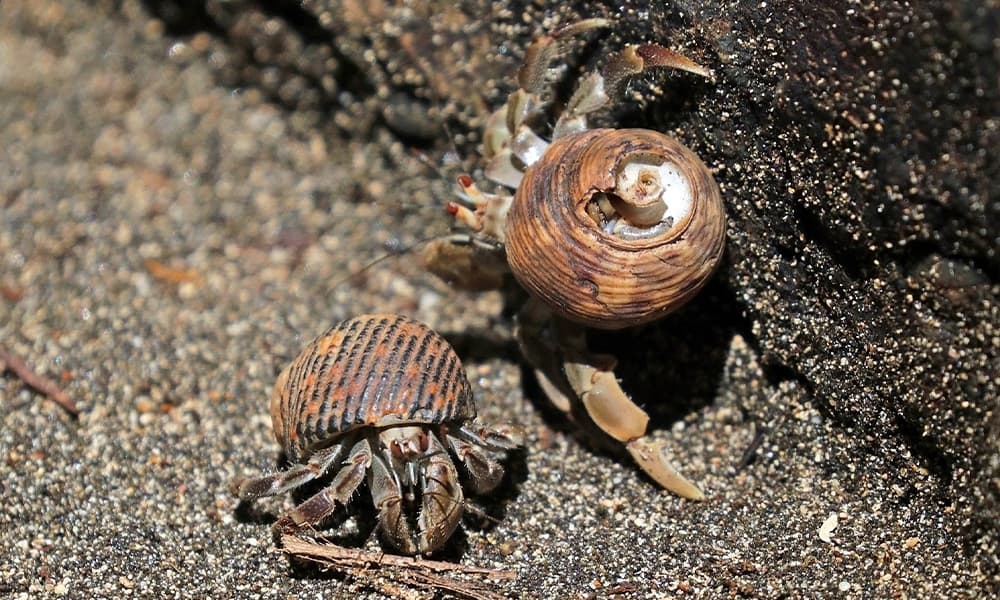First, find a beach along the Pacific coast and find yourself a comfy spot to sit. Next, you’re going to stare out over the expanse of sand and relax your eyes, looking at everything but not focusing on anything in particular, kind of like how you stared at those magic eye photos that were popular in the 90s. After a few seconds, you’ll start to see little shells dancing around, leaving little tracks in the sand. Congratulations, you’ve successfully spotted today’s featured crustacean, the Ecuadorian hermit crab.
The Ecuadorian hermit crab (Coenobita compressus), sometimes called the Pacific hermit crab, is known as the cangrejo ermitaño in Spanish. Though Ecuador seems to have claimed naming rights, these little crabs have a huge range living on Pacific beaches from California to Chile.
Ecuadorian hermit crabs are a species of land crab. They spend their adult lives stumbling, bumbling, and rumbling around the beaches and coastal ecosystems on the Pacific side of Costa Rica. Though they can and do travel well away from the foamy waves of the seashore, they need to stay within the vicinity of the ocean. They require salt water as adults because they have gills and need a certain amount of moisture to breathe. They also need the sea to reproduce. Females lay hundreds of eggs in the water, and the larvae feed on phytoplankton until they mature and move to land.
Ecuadorian hermit crabs lack a key feature of normal crabs, a hard protective shell. Instead of forming their own shell, they hide their soft, vulnerable abdomen in the shells of dead mollusks. They curl their abdomen around the swirly inside of the shell, giving them a solid grip on their protective home.
As they grow, they eventually become too large for their adopted dwellings and must search for a larger shell or risk exposing their tender backends to predators. Competition for ideal shells is fierce, with crabs aggressively fighting with one another to claim the shell with the proper fit.
These little crabs are scavengers with a hugely varied diet that includes just about any biological item that is washed up with the tide including vegetation, dead sea creatures, or the manure deposited by the local horse tour. Food items appear at random intervals, often with great distances between one item and the next, so Ecuadorian hermit crabs need to act fast when the opportunity arises, often leading to a large pile of crabs scarfing down whatever it is very quickly.
I live on the Pacific coast, so I see Ecuadorian hermit crabs with great frequency while visiting the beach with my family. Even though I know they venture well inland from the shore, I still can’t help but think ‘What are you doing here?’ when I see one crawling across the forest floor well up on a mountain while hiking to check cameras.
They are generally too small to activate the motion sensor on my camera traps, so the videos I have of them are the result of a larger animal triggering the camera, and the hermit crabs just being in the area. I’ve included a few clips that spotlight Ecuadorian hermit crabs in the video below but be warned, the most impressive clip features hundreds of crabs munching away on a deceased sea turtle. The number of hermit crabs is impressive, but dead sea turtle may be a little much for some.
About the Author
Vincent Losasso, founder of Guanacaste Wildlife Monitoring, is a biologist who works with camera traps throughout Costa Rica. Learn more about his projects on facebook or instagram. You can also email him at: vincent@guanacastewildlifemonitoring.com






